Israel to sign Artemis Accords: foreign ministerby Park Si-soo — January 18, 2022
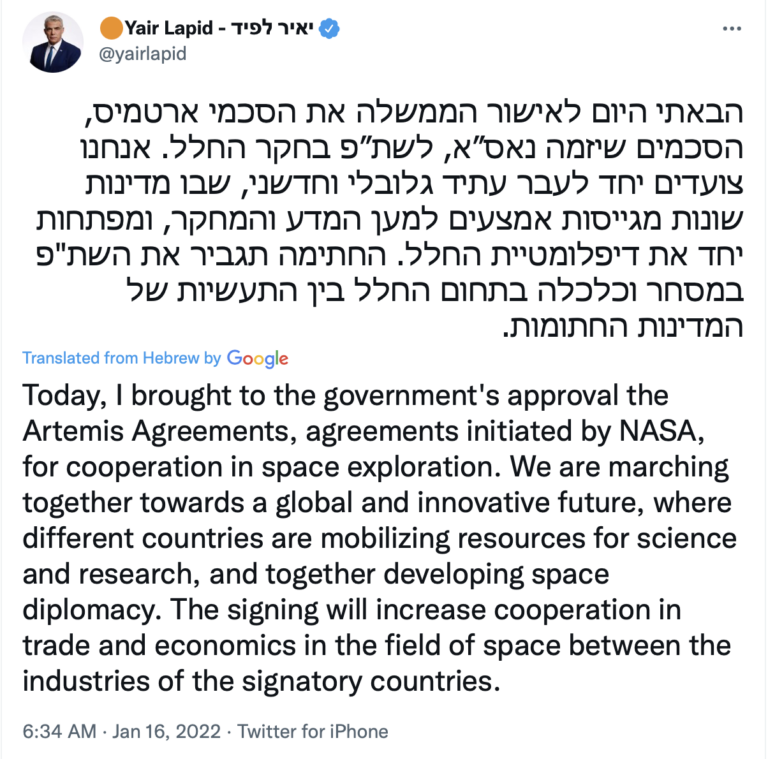 Israel’s foreign minister Yair Lapid wrote on Twitter on Jan. 16 that his country will sign the U.S.-led Artemis Accords outlining best practices for space exploration. Credit: NASA
Israel’s foreign minister Yair Lapid wrote on Twitter on Jan. 16 that his country will sign the U.S.-led Artemis Accords outlining best practices for space exploration. Credit: NASASEOUL, South Korea — Israel will sign the U.S.-led Artemis Accords outlining best practices for space exploration, according to Israeli Foreign Minister Yair Lapid.
“Today, I won the government’s approval to join the Artemis Accords, initiated by NASA, for cooperation in space exploration,” Lapid said Jan. 16 via Twitter. “We are moving toward a global and innovative future where countries mobilize resources for science and research, and work together to advance space diplomacy. To sign the accords will strengthen cooperation with other signatories in the field of trade and economy.”
https://spacenews.com/israel-to-sign-artemis-accords-foreign-minister/NASA foresees gap in lunar landings after Artemis 3by Jeff Foust — January 20, 2022 [SN]
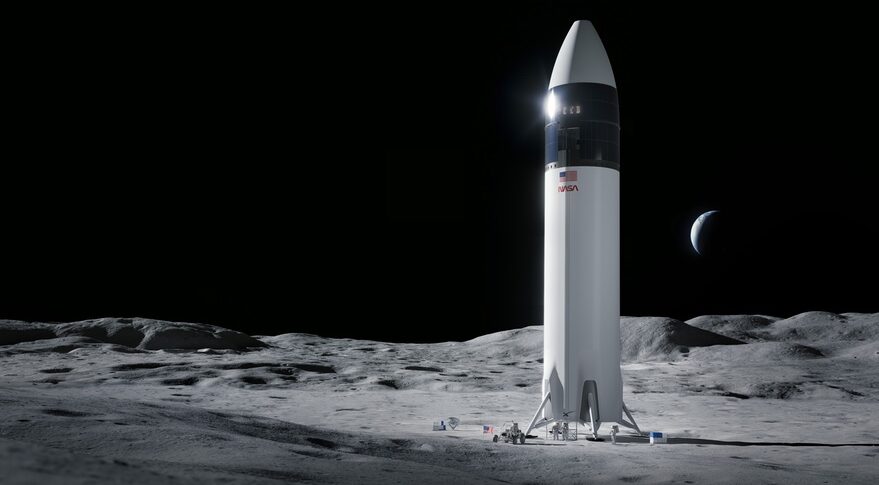 After a SpaceX Starship lands astronauts on the moon on Artemis 3, NASA will wait at least two years for the Artemis 5 mission before making a second crewed landing. Credit: SpaceX
After a SpaceX Starship lands astronauts on the moon on Artemis 3, NASA will wait at least two years for the Artemis 5 mission before making a second crewed landing. Credit: SpaceXWASHINGTON — After landing astronauts on the moon in the mid-2020s for the first time in more than a half-century, NASA will wait at least two more years before making a second crewed lunar landing as part of the Artemis program.
Source:
https://spacenews.com/nasa-foresees-gap-in-lunar-landings-after-artemis-3/Op-ed | NASA Needs a Lead Program Office for Artemisby Kevin Chilton — January 20, 2022 [SN]
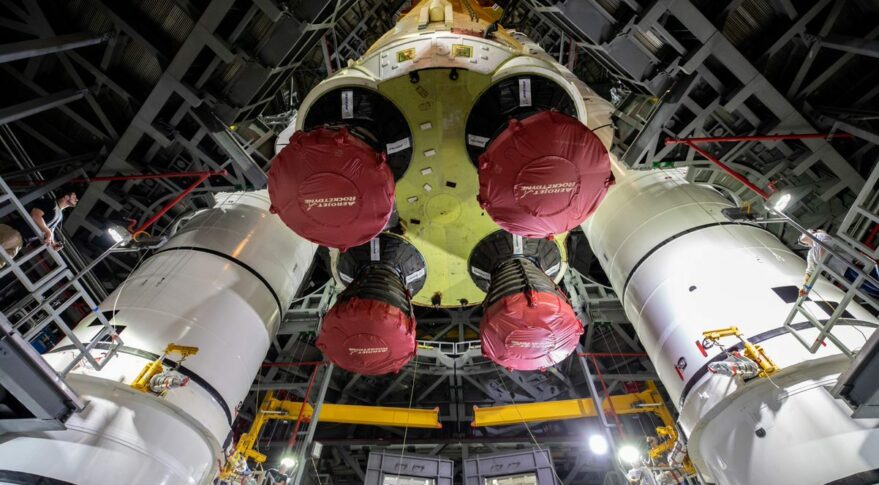 The SLS core stage and twin solid rocket boosters for NASA's Artemis 1 mission are shown in June 2021 inside the Kennedy Space Center's Vehicle Assembly Building. Credit: NASA/Cory HustonA return to the moon requires bold action. The time is now.
The SLS core stage and twin solid rocket boosters for NASA's Artemis 1 mission are shown in June 2021 inside the Kennedy Space Center's Vehicle Assembly Building. Credit: NASA/Cory HustonA return to the moon requires bold action. The time is now.America’s Apollo, Space Shuttle and International Space Station programs bespeak how a nation with a robust Human Space Exploration Program can lead the world in technological prowess, inspire its population to greatness, and attract strategic partners among like-minded nations.
https://spacenews.com/op-ed-a-return-to-the-moon-requires-bold-action-the-time-is-now/Israel becomes 15th nation to join Artemis Accords by Park Si-soo — January 27, 2022 [SN]
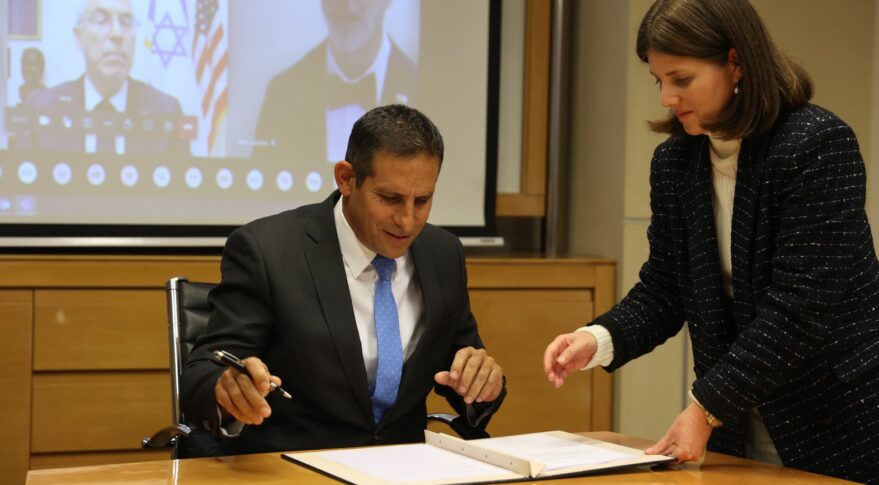 Uri Oron, center, director-general of the Israel Space Agency, is poised to sign the Artemis Accords in Israel, Jan. 26. Credit: Israel Space Agency
Uri Oron, center, director-general of the Israel Space Agency, is poised to sign the Artemis Accords in Israel, Jan. 26. Credit: Israel Space AgencySEOUL, South Korea — Israel has joined the U.S.-led Artemis Accords for space exploration, hoping to use the agreement as a means of enhancing its space cooperation in the fields of research, science and innovation.
“I am proud to sign the Artemis Accords. Israel has officially joined this groundbreaking project, led by NASA, to reinstate manned flights to the moon in upcoming years,” Israel Space Agency’s Director-General Uri Oron said in a signing ceremony, Jan. 26, making the country the fifteenth signatory to the pact. “The Israeli Space Agency will continue to promote collaborations in research, science, innovation and economy within the framework of the Artemis Accords, between Israeli organizations and our international partners.”
https://spacenews.com/israel-becomes-15th-nation-to-join-artemis-accords/How Software Steers the Return to the Moonby Robert Bell — February 23, 2022 Sponsored Post [SN]
The 1960s ushered in an era of human space exploration that has never been equaled. Humans traveled farther from our planet than ever before – not once but half a dozen times – and those journeys sparked the dreams and ambitions of millions.
https://spacenews.com/how-software-steers-the-return-to-the-moon/Congress presses NASA for more details on Artemis costs and schedulesby Jeff Foust — March 2, 2022 [SN]

While NASA expects to land astronauts on the moon on the Artemis 3 mission in 2025, other witnesses at a March 1
hearing expected that to be delayed by at least one or two years. Credit: SpaceXWASHINGTON — Members of Congress, concerned about growing costs and slipping schedules, pressed NASA for more details about the management and overall strategy of the agency’s Artemis lunar exploration plan.
At a March 1 hearing by the House Science Committee’s space subcommittee, members of both parties said they were impatiently waiting for long-promised plans from NASA on how Artemis will be managed while ensuring it supports eventual human missions to Mars.
https://spacenews.com/congress-presses-nasa-for-more-details-on-artemis-costs-and-schedules/Bahrain joins Artemis Accordsby Jeff Foust — March 12, 2022 [SN]
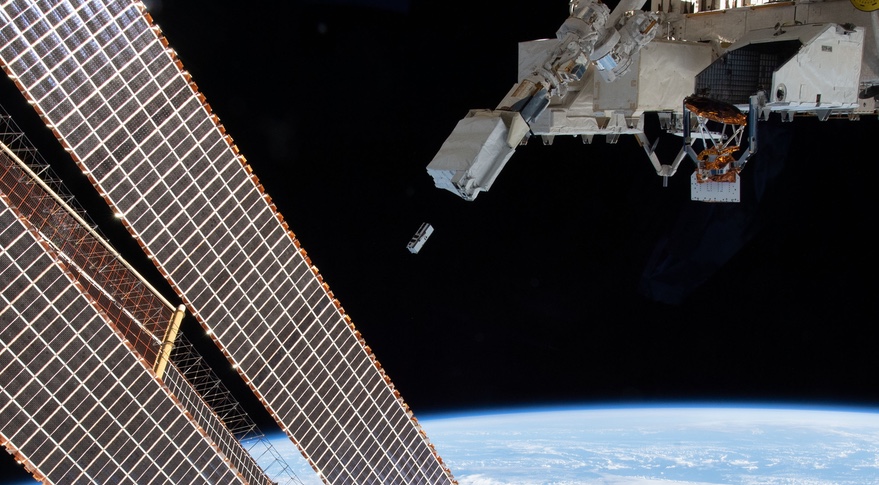 Bahrain's first satellite, a 3U cubesat called Light-1 developed in cooperation with the U.A.E., was deployed from the ISS in February. Credit: NASA
Bahrain's first satellite, a 3U cubesat called Light-1 developed in cooperation with the U.A.E., was deployed from the ISS in February. Credit: NASAWASHINGTON — Bahrain became the latest country to join the Artemis Accords as the agreement regarding principles for cooperation in space exploration continues to expand beyond traditional spacefaring nations.
Mohamed Al Aseeri, head of the National Space Science Agency of Bahrain, signed the Accords March 2 during the U.S.-Bahrain Strategic Dialogue. While the signing was briefly mentioned as part of those meetings, it was not formally announced by NASA and the State Department until March 7.
https://spacenews.com/bahrain-joins-artemis-accords/Singapore signs the Artemis Accordsby Park Si-soo — March 29, 2022 [SN]
 Singapore’s trade and industry minister Gan Kim Yong holds up the Artemis Accords, signed March 28 between Singapore and the United States in Washington, in this image captured from Singaporean TV news.
Singapore’s trade and industry minister Gan Kim Yong holds up the Artemis Accords, signed March 28 between Singapore and the United States in Washington, in this image captured from Singaporean TV news.SEOUL, South Korea — Singapore has become the 18th country to join the U.S.-led Artemis Accords for space exploration, hoping to use the agreement to enhance its nascent domestic space industry.
Source:
https://spacenews.com/singapore-signs-the-artemis-accords/Romania signs the Artemis AccordsCompanies build up teams to compete for Artemis lunar roverby Jeff Foust — April 11, 2022 [SN]
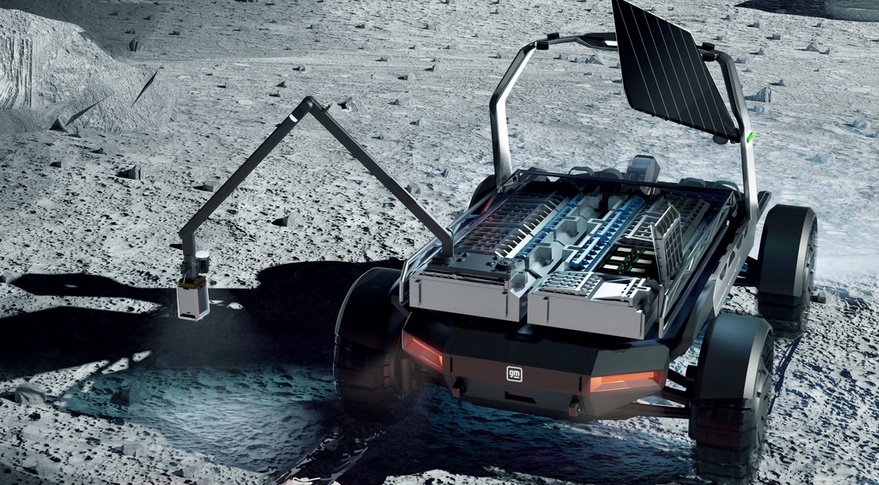 MDA will provide the robotic arm on a lunar rover proposed by Lockheed Martin and General Motors for later Artemis missions to the moon. Credit: Lockheed Martin
MDA will provide the robotic arm on a lunar rover proposed by Lockheed Martin and General Motors for later Artemis missions to the moon. Credit: Lockheed MartinCOLORADO SPRINGS — Companies are adding to or creating new teams in anticipation of a NASA competition for a lunar rover to support later Artemis missions to the moon.
Lockheed Martin announced April 4 that it was adding Canadian company MDA to its partnership with General Motors to develop a rover. MDA, which developed robotic arms for the shuttle and International Space Station, will provide a robotic arm for the Lockheed-GM rover.
https://spacenews.com/companies-build-up-teams-to-compete-for-artemis-lunar-rover/Electric vehicle company with NASA contract issues financial warningby Jeff Foust — May 11, 2022 [SN]
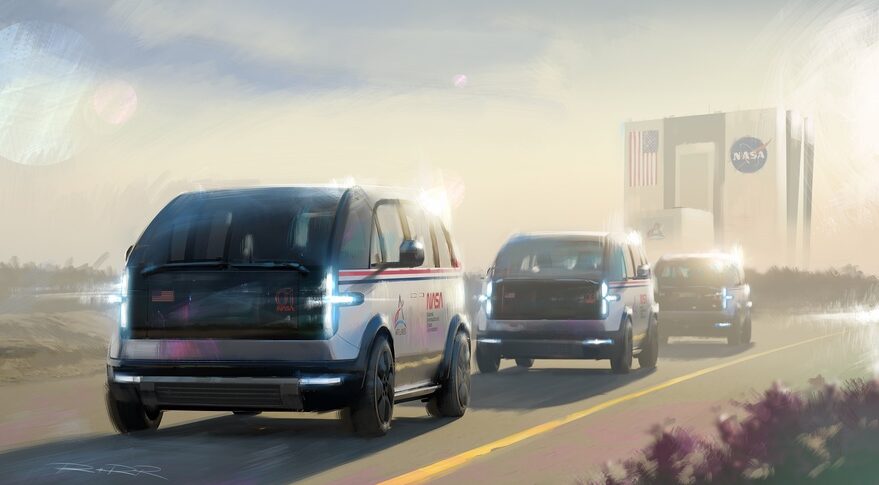 NASA selected Canoo in March to provide electric vans that will transport astronauts to the launch pad for Artemis missions. Credit: Canoo
NASA selected Canoo in March to provide electric vans that will transport astronauts to the launch pad for Artemis missions. Credit: CanooWASHINGTON — The electric vehicle company that recently won a NASA contract to provide a modern version of the “Astrovan” to transport Artemis astronauts to the launch pad warned May 10 it may soon run out of money.
In a filing with the Securities and Exchange Commission May 10, Canoo Technologies issued what is known as a “going concern” warning because of continued losses. The company reported a net loss of $125.4 million in the first quarter and had $104.9 million of cash available at the end of the quarter.
https://spacenews.com/electric-vehicle-company-with-nasa-contract-issues-financial-warning/Colombia signs Artemis Accordsby Jeff Foust — May 11, 2022 [SN]
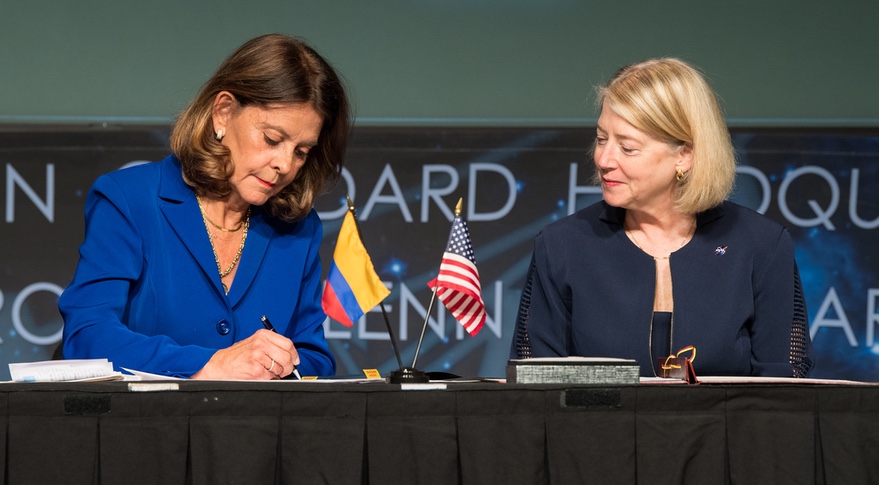 Colombian Vice President and Foreign Minister Marta Lucía Ramírez (left) signs the Artemis Accords May 10 at NASA Headquarters with NASA Deputy Administrator Pam Melroy. Credit: NASA/Aubrey Gemignani
Colombian Vice President and Foreign Minister Marta Lucía Ramírez (left) signs the Artemis Accords May 10 at NASA Headquarters with NASA Deputy Administrator Pam Melroy. Credit: NASA/Aubrey GemignaniWASHINGTON — Colombia signed the Artemis Accords for responsible space exploration May 10, continuing a steady stream of countries that have acceded to the agreement.
Marta Lucía Ramírez, vice president and foreign minister of Colombia, signed the agreement at NASA Headquarters May 10 alongside NASA Deputy Administrator Pam Melroy. Colombia is the 19th nation to join the Accords, unveiled in 2020, and the third in Latin America after Brazil and Mexico.
NASA selects Axiom Space and Collins Aerospace for spacesuit contractsby Jeff Foust — June 1, 2022 Updated 7 p.m. Eastern with additional contract details. [SN]
 A lunar spacesuit being developed by a team led by Collins Aerospace, which, along with Axiom Space, won NASA contracts to develop and provide spacesuits for Artemis missions and the ISS. Credit: Collins Aerospace
A lunar spacesuit being developed by a team led by Collins Aerospace, which, along with Axiom Space, won NASA contracts to develop and provide spacesuits for Artemis missions and the ISS. Credit: Collins AerospaceWASHINGTON — NASA awarded contracts to Axiom Space and Collins Aerospace to provide spacesuits for International Space Station spacewalks and Artemis moonwalks, although neither the agency nor the winning companies offered many technical or financial details.
NASA announced June 1 it selected the two companies for Exploration Extravehicular Activity Services, or xEVAS, contracts to support the development of new spacesuits as well as purchasing spacesuit services. The companies will own the suits they develop and will effectively rent them to NASA for space station and Artemis missions, while also being able to offer the suits to other customers.
https://spacenews.com/nasa-selects-axiom-space-and-collins-aerospace-for-spacesuit-contracts/NASA awards contracts for next-generation space and moonsuitsJune 1, 2022 William Harwood STORY WRITTEN FOR CBS NEWS & USED WITH PERMISSION [SFN]
 An artist’s illustration of two suited crew members working on the lunar surface. The one in the foreground lifts a rock to examine it while the other photographs the collection site in the background. Credit: NASA
An artist’s illustration of two suited crew members working on the lunar surface. The one in the foreground lifts a rock to examine it while the other photographs the collection site in the background. Credit: NASANext-generation spacesuits, needed by astronauts aboard the International Space Station and by moonwalkers in the agency’s Artemis program, will be provided by two companies competing for contracts valued at up to $3.5 billion through 2034, NASA officials announced Wednesday.
https://spaceflightnow.com/2022/06/01/nasa-awards-contracts-for-next-generation-space-and-moonsuits/France joins Artemis Accordsby Jeff Foust — June 8, 2022 [SN]
 Philippe Baptiste, president of the French space agency CNES (left), and NASA Administrator Bill Nelson at a June 7 event where France formally joined the Artemis Accords. Credit: NASA/Keegan Barber
Philippe Baptiste, president of the French space agency CNES (left), and NASA Administrator Bill Nelson at a June 7 event where France formally joined the Artemis Accords. Credit: NASA/Keegan BarberWASHINGTON — France joined the U.S.-led Artemis Accords June 7, a long-anticipated but significant milestone for the effort to establish best practices for sustainable space exploration.
In a ceremony at the French ambassador’s resident here, Philippe Baptiste, president of the French space agency CNES, signed the Artemis Accords alongside NASA Administrator Bill Nelson. The signing ceremony was part of an event to mark the 60th anniversary of CNES.
“We have drawn inspiration from the success of the International Space Station, and we are now entering a new chapter in human exploration,” Baptiste said in remarks at the event.
https://spacenews.com/france-joins-artemis-accords/ESA and NASA to cooperate on Earth science and lunar missionby Jeff Foust — June 15, 2022 [SN]
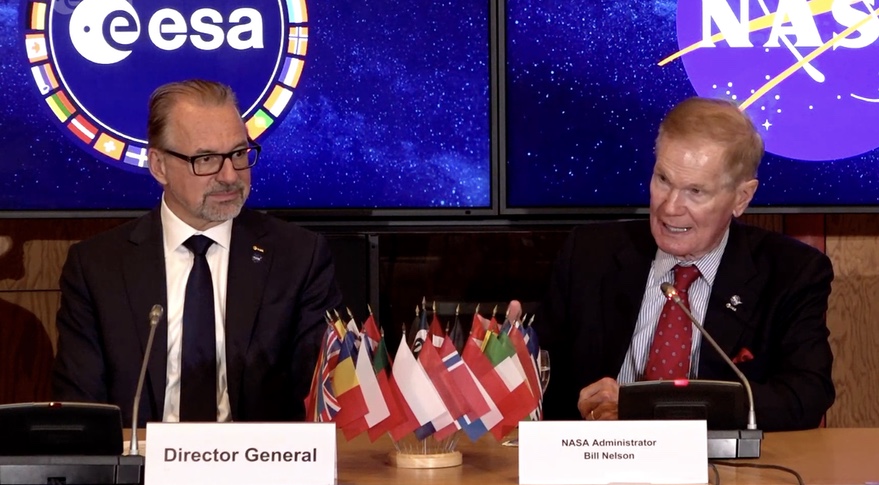 ESA Director General Josef Aschbacher and NASA Administrator Bill Nelson talk about agreements signed June 15 to cooperate on Earth science and a lunar mission. Credit: ESA TV
ESA Director General Josef Aschbacher and NASA Administrator Bill Nelson talk about agreements signed June 15 to cooperate on Earth science and a lunar mission. Credit: ESA TVPASADENA, Calif. — NASA and the European Space Agency announced agreements to cooperate on Earth science and a lunar mission June 15, but agency leaders said they’re still discussing more substantial cooperation on the Artemis program and Mars exploration.
After a meeting of the ESA Council in Noordwijk, Netherlands, NASA and ESA announced two new cooperative agreements. One, called the Framework Agreement for a Strategic Partnership in Earth System Science, outlines cooperation between the agencies on topics that include continuity of measurements and exchange of data. It builds upon a joint statement of intent the agencies signed in July 2021.
https://spacenews.com/esa-and-nasa-to-cooperate-on-earth-science-and-lunar-mission/Axiom and Collins only bidders for NASA spacesuit contractsby Jeff Foust — June 26, 2022 [SN]
 A lunar spacesuit being developed by a team led by Collins Aerospace, which, along with Axiom Space, won NASA contracts to develop and provide spacesuits for Artemis missions and the ISS. Credit: Collins Aerospace
A lunar spacesuit being developed by a team led by Collins Aerospace, which, along with Axiom Space, won NASA contracts to develop and provide spacesuits for Artemis missions and the ISS. Credit: Collins AerospaceWASHINGTON — The two companies NASA selected earlier this month to develop spacesuits for the International Space Station and Artemis lunar missions were the only companies to bid on the project, according to agency procurement documents.
NASA announced June 1 it awarded contracts to teams led by Axiom Space and Collins Aerospace to develop new spacesuits for both ISS spacewalks and Artemis lunar landing missions through its Exploration Extravehicular Activity Services, or xEVAS, program. Agency officials, though, provided few details at the time about the contracts or why it selected those two companies.
https://spacenews.com/axiom-and-collins-only-bidders-for-nasa-spacesuit-contracts/Saudi Arabia signs Artemis Accordsby Jeff Foust — July 16, 2022 [SN]
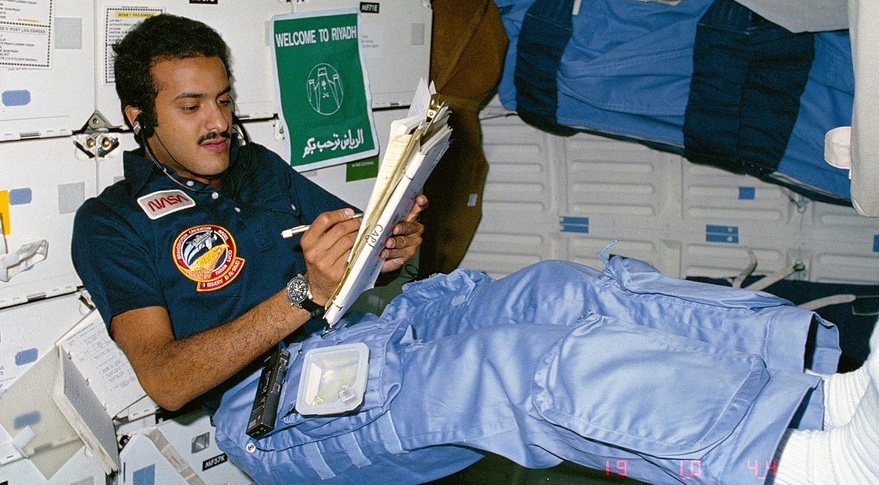 Sultan bin Salman Al Saud, a member of the Saudi royal family, flew to space on a shuttle mission in 1985 and is to date the only person from Saudi Arabia to go to space. Credit: NASA
Sultan bin Salman Al Saud, a member of the Saudi royal family, flew to space on a shuttle mission in 1985 and is to date the only person from Saudi Arabia to go to space. Credit: NASAWASHINGTON — Saudi Arabia is the latest nation to sign the Artemis Accords as part of what the White House called “expanding cooperation” with the United States in space.
The signing of the Accords, which outline best practices for safe and sustainable space exploration, took place in a virtual ceremony July 14 featuring officials from NASA, the U.S. State Department, Saudi Space Commission and the countries’ embassies.
https://spacenews.com/saudi-arabia-signs-artemis-accords/